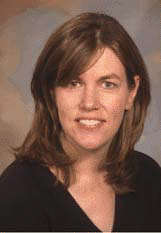Current Developments
As of September 2006, FDA-approved devices based on tissue engineering principles included autologous chondrocyte implantation for knee articular cartilage defects, cultured epidermal autografts for extensive burns or congenital nevi, and recombinant human bone morphogenetic protein for lumbar spinal fusion, said Dr. Nussenbaum, adding that most of the other work in regenerative therapies remain in the developmental phase. There are individual examples of using cell-based therapy for regenerating the distal portion of a patient’s thumb (Vacanti CA et al. NEJM 2001;344:1511-4), or producing vascular grafts (Naito Y et al. J Thoracic Cardiovasc Surg 2003;125:419-20), but these techniques are not currently in regular use.
Explore This Issue
February 2007For Bruce Baum, DMD, PhD, Chief of the Gene Transfer Section at the National Institute of Dental and Craniofacial Research of the NIH in Bethesda, MD, the most dramatic work in this field so far has come from researchers at Wake Forest who used tissue engineering to construct a functioning artificial bladder (Atala A et al. Lancet 2006;367:1241-6). Other notable work is from researchers in Germany who engineered a mandible (Warnke PH et al. Lancet 2004;364:766-70). That was also very dramatic as it corrected a severe disfigurement, said Dr. Baum.
Potential Applications in Otolaryngology
Therapies in various stages of development that will likely have a significant impact on the care of otolaryngology patients include regeneration of bone, cartilage, mucosa, nerve, skeletal muscle, salivary tissue, hearing and balance organs, endocrine organs, and trachea, said Dr. Nussenbaum.
Current preclinical research into a tissue-engineered trachea and tissue-engineered cartilage for ear and nasal reconstruction has shown promising results. Using cells from a sheep’s nasal septum and implanted in a nude mouse, researchers have been able to successfully create a tissue-engineered trachea. However, successful implantation of the created trachea into a tracheal defect has not yet been achieved (see Kojima K et al. FASEB J 2003;17:823-8]. Using autograft cartilage, promising results are also being shown in engineering cartilage for the ear and nose that may be indicated for such applications as microtia repair or cleft nasal repair (see Walton et al. Plast Reconstr Surg 2002;110:234-49 and Shieh SJ et al. Biomaterials 2004;25:1545-57).
Additional preclinical and bench work is under way for vocal fold scarring. Susan L. Thibeault, PhD, of the Division of Otolaryngology-Head and Neck Surgery at the University of Wisconsin-Madison, and colleagues run one of the active labs in the country that is trying to develop a biomaterial that can mimic the extracellular matrix to create tissue that can replace scarred vocal folds. Currently, there is no good surgical option to treat vocal fold scarring.

Leave a Reply